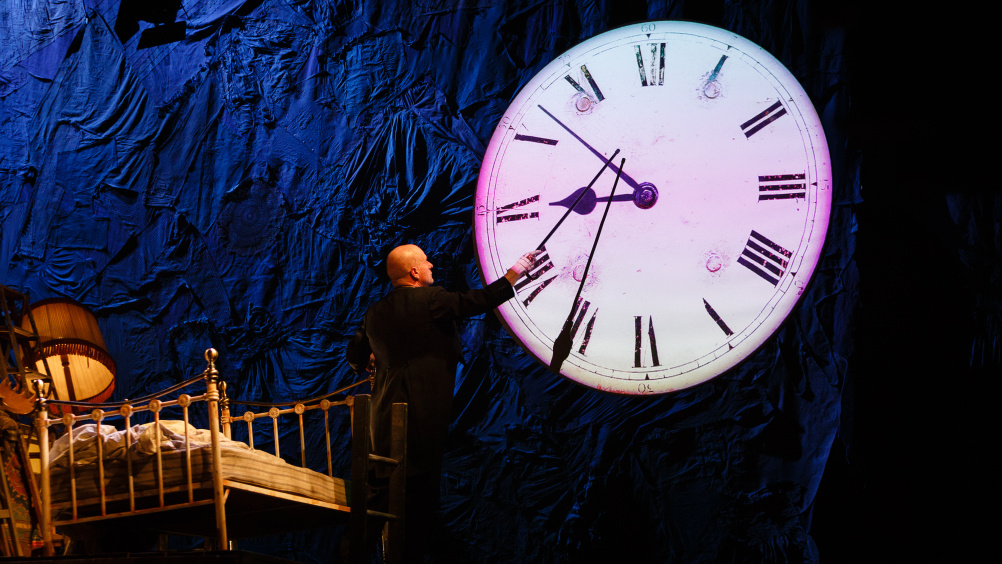Shining a spotlight on the “Cinderella” discipline of theatre design
“Theatre design tends to be a little bit of a Cinderella,” says curator Kate Burnett. “The difficulty is that we fall between the schools of architecture and fine art, and also fine art and craft and design – the whole process is collaborative, so it makes us quite hard to pigeonhole, and we’re never a priority.”

Source: Zuleika Henry
Peter Pan, set designed by Colin Richmond
Burnett has been working on new exhibition Make:Believe, which looks at sets, costumes, puppets and installations created by more than 140 UK-based theatre designers between 2011 and 2015.
The exhibition is a collaboration between the Society of British Theatre Designers, Nottingham Trent University and the Victoria & Albert Museum. After its run at Nottingham Trent this month, selected work from Make: Believe will then be taken on an international tour, travelling to the Prague Quadrennial 2015 and the V&A Museum, among others.
Designs have been taken from sporting, music and theatre events – examples include Es Devlin’s design of the Olympic Games’ 2012 closing ceremony and Miley Cyrus’ performance set, Joanna Scotcher’s work on the State Apartments at Kensington Palace, and sets from Royal Shakespeare Company plays and Glastonbury festival.
The display was curated by Burnett, who is the UK national curator for the SBTD and the Prague Quadrennial 2015, an international theatre design competition. She is also currently a Reader in Theatre Design at Nottingham Trent university.

“It’s about bringing more designers out of the woodwork to submit work, whether it has been made in school or village halls or for international opera,” Burnett says. “In the exhibition, the public, students and practitioners can see a wealth of work that is otherwise invisible – normally, it’s only seen when a show is being performed, then it just disappears.”
Burnett also says that school education tends to focus on theatre design as a small project under wider umbrellas, rather than as a discipline of it’s own: “Neither drama, art or technology quite know what to do with theatre design,” she says. “Big national exhibitions are a good opportunity to show the ideas behind our work and the design processes.”
The exhibition contains images mounted onto wall-boards, with individually lit model boxes of displays and props, and interactive installations. One live installation sees two designers set up a mini proscenium theatre in a tent, where they perform as one of four possible characters whenever a visitor puts their head in to the tent.
A research project accompanies Make:Believe, which aims to look into the designers’ thought processes through a selection of interviews. “It’s not only a collection of work, but also commentary on their work, through a collection of statements on their own projects,” Burnett says.

Alongside the display, the university has commissioned a play by Michael Eaton and a debate about the arts and design education heritage of Nottingham Trent, which dates back to the 1800s, set to take place at Nottingham Castle.
“In the last 20 years, the growth in the number of theatre design university courses has been astonishing,” Burnett says. “Theatre design as a discipline itself is very strong, but incredibly badly paid and hard to get into. One of the reasons we’re holding the exhibition here at Nottingham Trent is our desire to make that link between industry and education stronger than ever.”
Make: Believe UK Design for Performance 2011-2015 will run from 14 January-31 January at the Newton building atrium, Nottingham Trent University, Burton Street, Nottingham, NG1 4BU.
Selected work will then be exhibited at the Prague Quadrennial of Performance Design and Space 2015 from 17-28 June, and at the Victoria & Albert Museum, London from July 2015- January 2016. The work will then be shown in a selection of cities and music festivals, soon to be announced.
-
Post a comment




